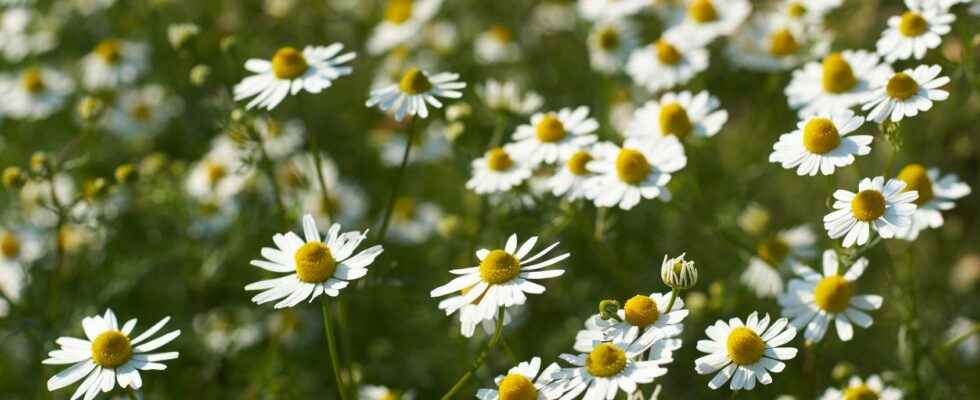German chamomile or Chamomilla recutitaalso called Little chamomile or Matricaria recutita, is a single-stemmed annual herb. It is present in almost all of Europe in the wild as well as cultivated. It has white and yellow flowers about 20 to 60 centimeters high, with a pronounced and recognizable scent. Rustic and discreet, German chamomile is internationally famous.
A little history
As early as the first century AD, the encyclopedist Pliny described the three species of chamomile: Matricaria recutita (annual German chamomile), Chamaemelum nobile (Roman chamomile perennial) and Tanacetum parthenium (Feverfew). In France, the first written recommendation concerning the cultivation of German chamomile dates back to 812, under Charlemagne. Legend has it that chamomile grows on uncultivated soil. His actions on disorders of the female cycle would have given him his name ” Matricaria ». It was indeed used to relieve the pains menstrual and postpartum.
German chamomile: growing and harvesting
It is an annual plant that is sown in the spring (March, April, May) in order to collect the flowers during the summer when they have just opened, it is at this time that the active subtances are the most concentrated. Depending on climate and exposure, it can bloom from May to November. Its pretty appearance daisy brighten up the gardens for a long time and balconies without requiring much care. Ideal for borders or beds, German chamomile also has its place in the vegetable garden. Relatively easy to grow, it is found in all European climates. Prefer a sunny or partial shade exposure to ensure good growth and optimal flowering.
Its medicinal properties
Although its light apple flavor makes chamomile the star of herbal teas and infusions, we often ignore its many virtues on health. Chamomile is effective against digestive disorders, nervous tension, wounds and certain problems cutaneous as’eczema.
Note. Herbal medicine has been used in traditional medicine for centuries. Its efficacy and safety are still debated. And for good reason, as the World Health Organization explains in a 1998 report“ a relatively small number of plant species have been studied for possible medical applications “. This article fits naturally into this approach. We should add that given the possible risks of adverse effects, drug interactions or even toxicity of certain plants, always inform your doctor if you regularly use herbal medicine.
Bibliography :
- Guide to Healing PlantsVidal edition, 2010.
- The Encyclopedia of Medicinal PlantsLarousse edition, 2001 and 2017.
- medicinal plantsEuropean Plant Substances Institute, March 2015.
- My essential oil bibleDanièle Festy, Leduc.s editions, 2017.
- Chemotyped essential oils, Dominique Baudoux and ML Breda, JMO edition.
Interested in what you just read?
